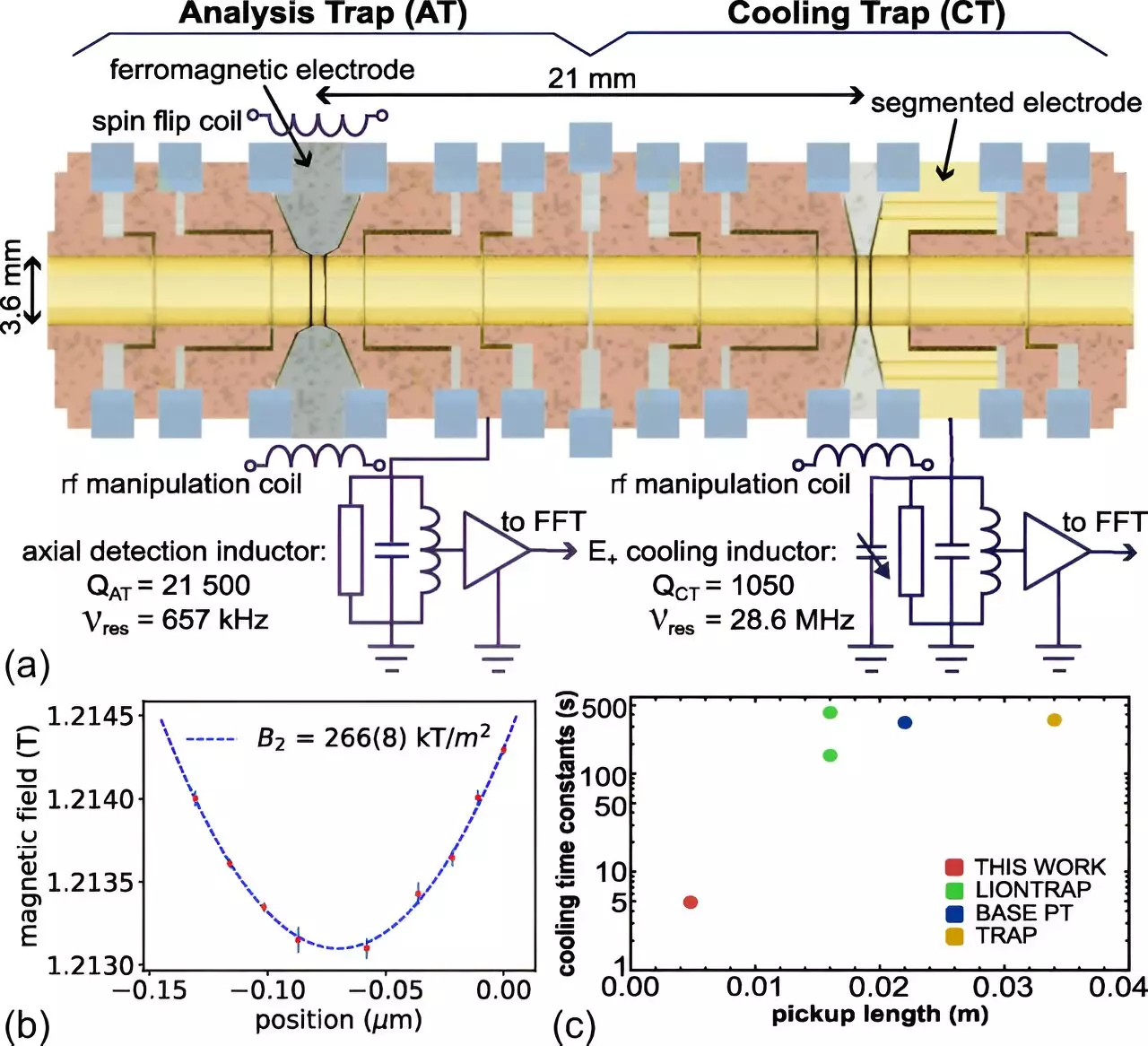The question of why the universe contains matter and virtually no antimatter has puzzled physicists for decades. The BASE international research collaboration at CERN has made a significant breakthrough in this area, led by Professor Dr. Stefan Ulmer from Heinrich Heine University Düsseldorf. By developing a trap that can cool individual antiprotons more rapidly than ever before, researchers hope to shed light on possible matter-antimatter asymmetries.
After the Big Bang, the universe was filled with high-energy radiation that generated pairs of matter and antimatter particles. According to theory, these pairs should annihilate each other, resulting in a universe devoid of matter. However, the existence of material objects suggests an imbalance, with slightly more matter than antimatter being generated. This contradiction to the standard model of particle physics has prompted physicists to seek more precise measurements of fundamental physical parameters.
The BASE collaboration, which includes universities in Düsseldorf, Hanover, Heidelberg, Mainz, and Tokyo, as well as research facilities at CERN, GSI Helmholtz Center, Max Planck Institute for Nuclear Physics, and others, aims to answer questions about the weight and magnetic moments of matter and antimatter particles. This research is crucial for expanding our understanding of particle physics and the universe.
Dr. Barbara Maria Latacz and the research team at CERN have achieved a significant advancement in cooling individual antiprotons for precise measurements. By combining two Penning traps into a single device, known as the “Maxwell’s daemon cooling double trap,” researchers can cool antiprotons to extremely low temperatures in a fraction of the time previously required. This breakthrough allows for more accurate measurements and reduced experimental uncertainties.
Professor Ulmer envisions constructing a mobile particle trap to transport antiprotons from CERN to a new laboratory at HHU. By improving the accuracy of measurements even further, researchers hope to uncover differences in the magnetic moments of protons and antiprotons with unprecedented precision. The ability to store and manipulate individual charged particles in traps opens up new possibilities for particle measurements and advancements in our understanding of fundamental physics.
The BASE collaboration’s breakthrough in measuring antimatter marks a significant step towards unraveling the mysteries of the universe’s matter-antimatter imbalance. By developing innovative traps and experimental techniques, physicists are pushing the boundaries of our knowledge and opening new avenues for discovery in the field of particle physics. As the research continues to evolve, we can look forward to gaining deeper insights into the nature of matter and antimatter and their fundamental properties.


Leave a Reply